October 2013, Vol. 240 No. 10
Features
Crosstex Reaches Crossroads With ‘Transformational’ Cajun-Sibon Pipeline
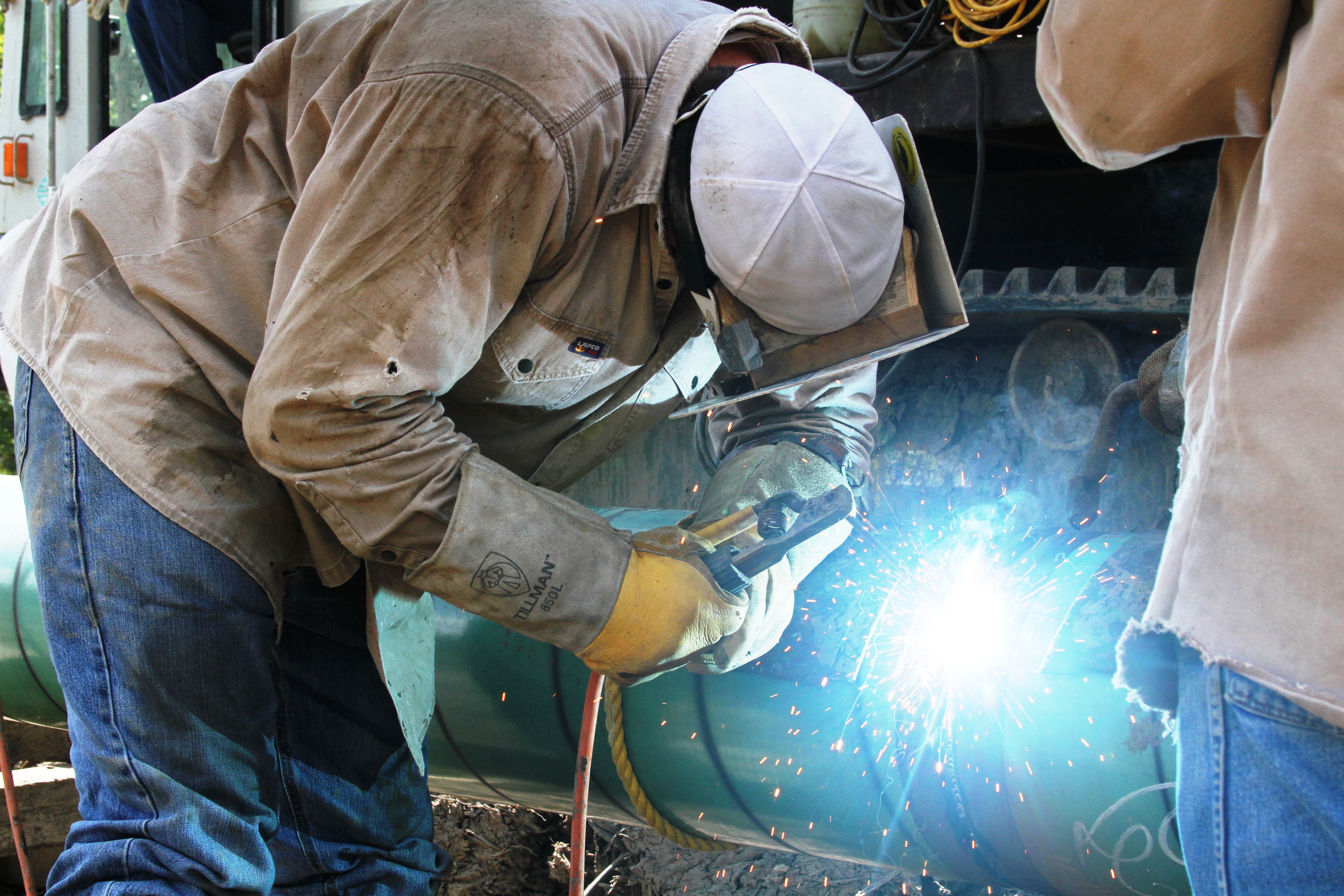
During his 30 years in the energy business, Barry Davis has no doubt heard a fair amount of bluster and hyperbole about “big projects.” Yet, even a brief talk with the Crosstex president and CEO about the Cajun-Sibon expansion project leaves the listener keenly aware that in his mind there can be no understating the importance of this endeavor to his company.
“This is a transformational project for us. Just five years ago, we were predominantly a natural gas midstream services company,” said Davis, who engineered a management-led buyout of Comstock Natural Gas, Inc. in 1996 that led to the formation Crosstex Energy Services. “This project on completion will put us at about 50% natural gas and 50% natural gas liquids, including condensates.”

Beyond signaling just how important the change in direction is for the company, the move further highlights how important the Louisiana market has become. According to Davis, the state currently has a demand for nearly 30% of NGLs – an amount that continues to grow.
The Cajun-Sibon expansion project consists of a 139-mile, 12-inch pipeline that will extend Crosstex’s existing 440-mile Cajun-Sibon NGL pipeline system, connecting its Eunice fractionation facility in south central Louisiana to Mont Belvieu supply lines in East Texas.
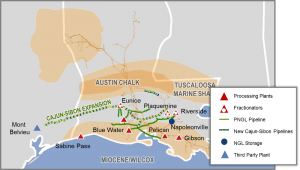
Additionally, Crosstex will expand the Eunice fractionator from 15,000 bpd to 55,000 bpd, while adding pump stations on the pipeline to increase capacity from 70,000 bpd to 120,000 bpd of “raw make” NGL, or “demethanized mix,” which includes any mixture of any or all of ethane, propane, isobutane, normal butane and natural gasoline.
This project will also include construction of a new 100,000 bpd fractionator at the company’s Plaquemine, LA gas processing complex and expansion of capacity from Eunice to the new Plaquemine fractionator. Total interconnected fractionation capacity in Louisiana after completion will be 155,000 bpd of NGL. In all, the project will cost about $750 million.
Phase I construction of the Cajun-Sibon pipeline is expected to reach “mechanical completion” in September with the expanded fractionation facilities to begin commissioning in October. A ramp-up to full volumes is likely in the fourth quarter.
“The project will provide a value-add alternative to the Mont Belvieu fractionation and liquids markets,” said Davis. “By connecting the high demand we are seeing in Louisiana with the ample supply of NGL in Texas, Cajun-Sibon will improve the reliability and diversity of NGL supply to the Louisiana petrochemical and refining markets.”
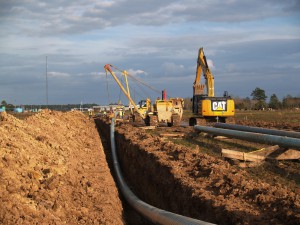
‘Robust Energy Environment’
The project is backed by a 10-year ethane and propane sales agreement with Dow Hydrocarbons and a five-year ethane sales agreement with Williams Olefins, LLC. At full capacity, Cajun-Sibon is expected to contribute $115-130 million of stable-fee based cash flow.
“In Louisiana, our assets are perfectly positioned to take advantage of this robust energy environment by linking supply with growing demand,” Davis said. “We are a major player in that market.”
In the past, the state’s petrochemical market has depended on Gulf of Mexico gas and NGL production, which in recent years has declined from about 12 Bcf/d to 4 Bcf/d. That same market uses up to 300,000 bpd of ethane while Louisiana produces less than 100,000 bpd.
During the past five years, domestic crude production has grown 40%, natural gas production has grown over 20% and NGL production has grown 30%. This increase in supplies is driving demand for liquids used by the petrochemical industry. There are 10 cracking plants in Louisiana, accounting for about 26% of U.S. ethylene capacity.
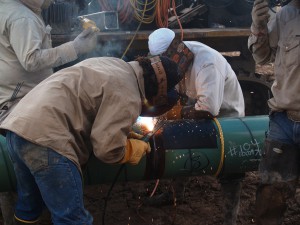
With significant infrastructure being added to the upper Texas and Louisiana Gulf Coasts and the growing significance of Mont Belvieu as a market center, the Dallas-based company looks to take advantage of these industry trends by connecting the ample supply of NGLs found in Texas with the Louisiana refining and petrochemical markets.
“Our customers rely on us to make up the difference in this supply,” said Davis, who holds a bachelor’s degree in finance from Texas Christian University. “Our Cajun-Sibon expansion project is built to meet a portion of the current shortfall, and we believe increasing market demand will lead to additional growth opportunities from our expanded platform.”
Rain And Directional Drilling
As with any large project, Crosstex had a lot of variables to consider in putting together the logistics and timeframe for the project, not the least of which was the weather, as January proved to be one of the rainiest months of the last 50 years in the area. Needless to say, the precipitation slowed progress.
“In order to continue construction during these weather conditions, extensive use of construction mats were required in Texas and Louisiana,” Davis said, of 22 rain days the crews experienced. “We have also found that the soil in the Texas region of the project did not have the integrity we were hoping it would, which resulted in delays and additional cost in laying extra mats for the heavy equipment working on the right of way.”
Separately, the complex nature of the pipeline expansion required several difficult directional drills, totaling about 27 miles of drilling and boring, or one-fifth of the total route. One directional drill covered about 2 miles, making it one of the longest ever recorded. On one of the longer drills, Crosstex encountered an unconsolidated formation which caused their contractor to have to redo the entire drill which postponed construction in other areas. In general, though, the CEO described the company as “pleased” with the pace and development of the project.
Due to the size of the project, multi-jurisdiction coordination and involvement of numerous regulatory agencies came into play for work done in both states. There was also pushback from environmental agencies during construction.
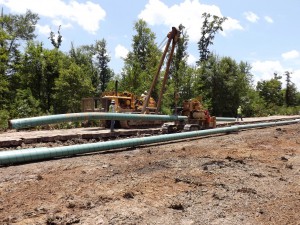
“As we do with many other projects, we sat down with the Army Corp of Engineers before submitting our permit applications to ensure we understand the full requirements for the application. ” Davis said. “While we have no problem with the pre-application meeting, we’ve had to work more intensely with the regulatory side of the Army Corp of Engineers as we proceeded.”
Phase II of the project is scheduled to start up in the second half of 2014, and Crosstex is busy acquiring the needed permits and right-of-way for construction. The company has already ordered materials, including pipe and pumps for station modifications, and in June workers broke ground for the new 100,000 bpd fractionator, located adjacent to the Plaquemine gas processing plant.
During the construction of Phase I, the project supported roughly 1,300 jobs in Louisiana and 1,000 in Texas. At one time, Crosstex had more than 300 contractors working on the Eunice expansion and as many as 300 contractors working on the construction of the pipeline. WHC, Inc., of Lafayette, LA., served as the main contractor on the pipeline, while Louisiana Crane, of Eunice, LA, was contracted as the main contractor on the Eunice expansion.
With the company’s strategic location near six of the nation’s most prolific gas plays – the Barnett, Eagle Ford, Permian, Haynesville, Utica and Marcellus shales – Crosstex has been a leading player in the midstream natural gas industry, specializing in the gathering, transmission, processing and fractionation of natural gas and natural gas liquids, as well as brine logistics and crude and condensate service offerings.
Prior to Crosstex, Davis served as president and COO of Comstock Natural Gas and founded Ventana Natural Gas in June 1992. Prior to that, he served as Vice President of Marketing and Project Development of Endevco Inc.
By Michael Reed, Managing Editor





Comments